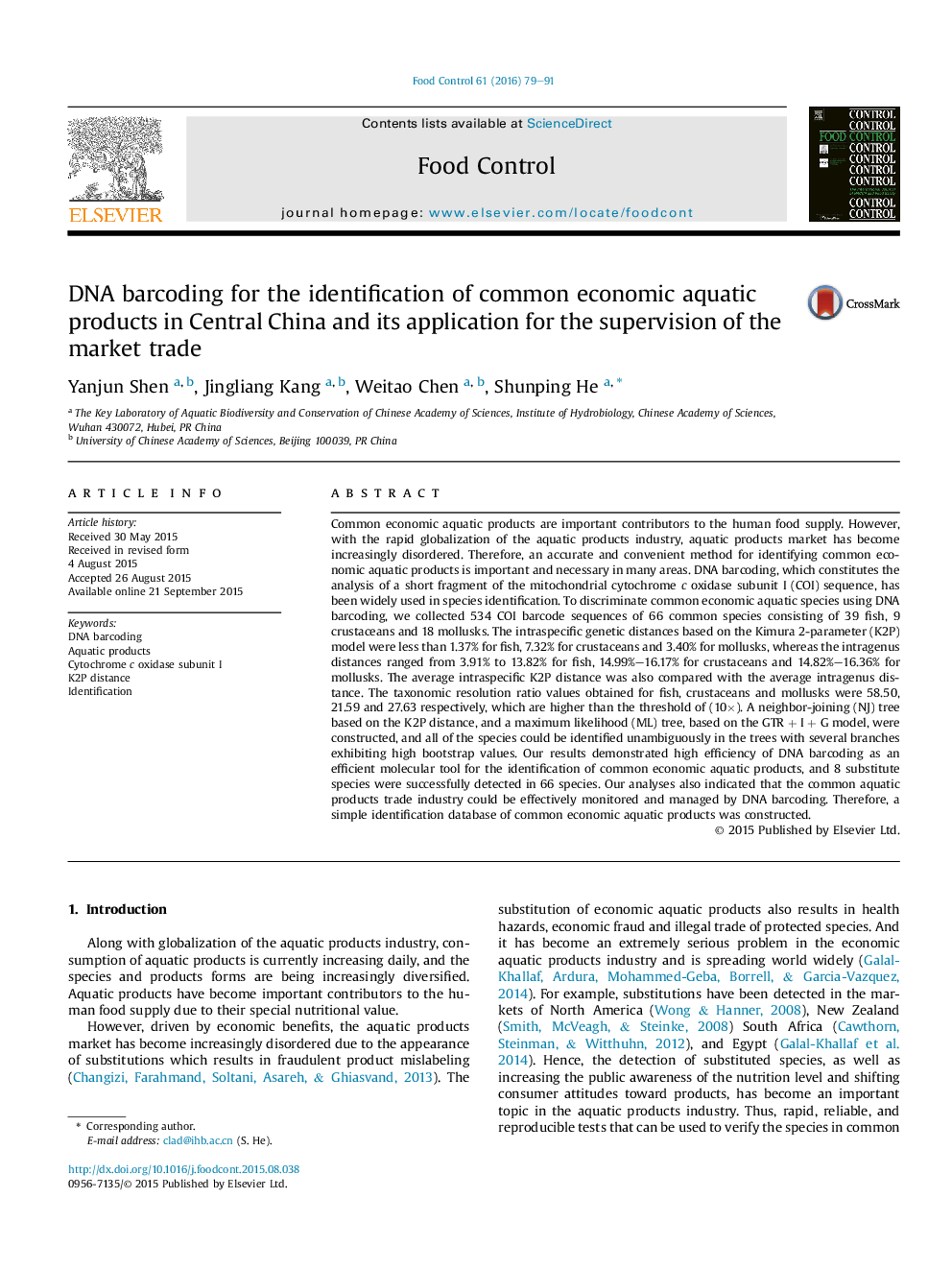| کد مقاله | کد نشریه | سال انتشار | مقاله انگلیسی | نسخه تمام متن |
|---|---|---|---|---|
| 4559105 | 1628401 | 2016 | 13 صفحه PDF | دانلود رایگان |

• DNA barcoding for common economic aquatic products in central China was validated.
• A high amount of mislabeling was detected in 8 common economic aquatic products.
• A simple identification database was constructed based on 66 species.
• DNA barcoding can be applying in supervising market trade of China.
Common economic aquatic products are important contributors to the human food supply. However, with the rapid globalization of the aquatic products industry, aquatic products market has become increasingly disordered. Therefore, an accurate and convenient method for identifying common economic aquatic products is important and necessary in many areas. DNA barcoding, which constitutes the analysis of a short fragment of the mitochondrial cytochrome c oxidase subunit I (COI) sequence, has been widely used in species identification. To discriminate common economic aquatic species using DNA barcoding, we collected 534 COI barcode sequences of 66 common species consisting of 39 fish, 9 crustaceans and 18 mollusks. The intraspecific genetic distances based on the Kimura 2-parameter (K2P) model were less than 1.37% for fish, 7.32% for crustaceans and 3.40% for mollusks, whereas the intragenus distances ranged from 3.91% to 13.82% for fish, 14.99%–16.17% for crustaceans and 14.82%–16.36% for mollusks. The average intraspecific K2P distance was also compared with the average intragenus distance. The taxonomic resolution ratio values obtained for fish, crustaceans and mollusks were 58.50, 21.59 and 27.63 respectively, which are higher than the threshold of (10×). A neighbor-joining (NJ) tree based on the K2P distance, and a maximum likelihood (ML) tree, based on the GTR + I + G model, were constructed, and all of the species could be identified unambiguously in the trees with several branches exhibiting high bootstrap values. Our results demonstrated high efficiency of DNA barcoding as an efficient molecular tool for the identification of common economic aquatic products, and 8 substitute species were successfully detected in 66 species. Our analyses also indicated that the common aquatic products trade industry could be effectively monitored and managed by DNA barcoding. Therefore, a simple identification database of common economic aquatic products was constructed.
Journal: Food Control - Volume 61, March 2016, Pages 79–91